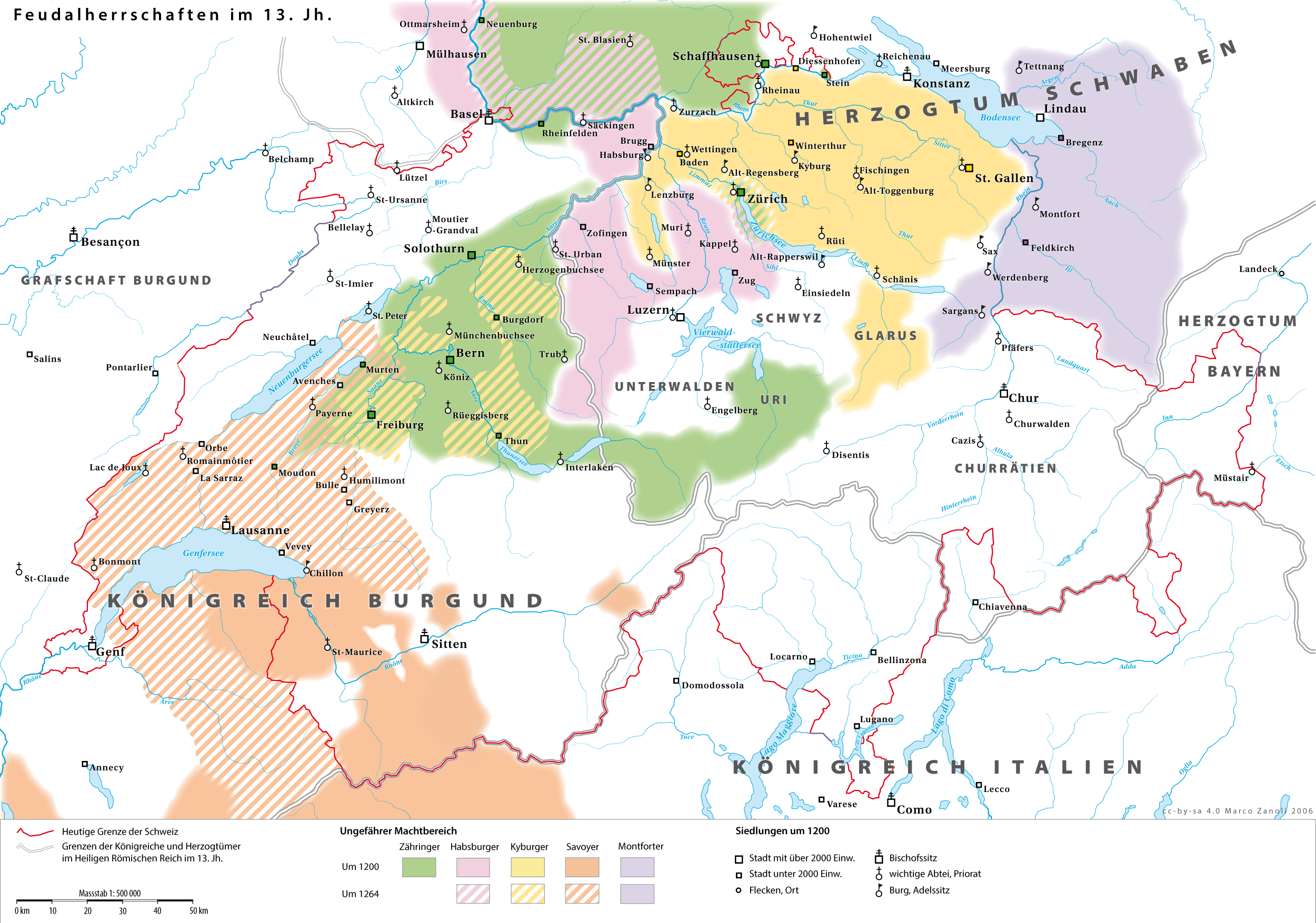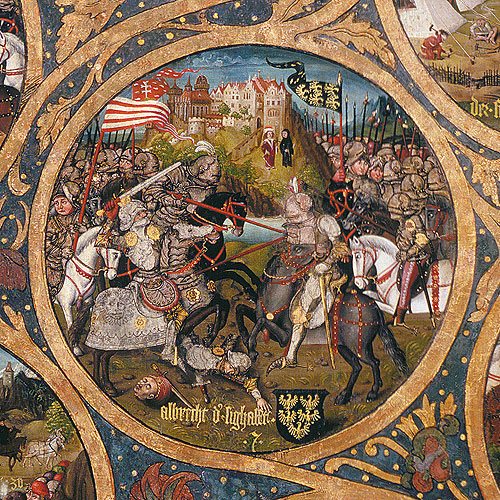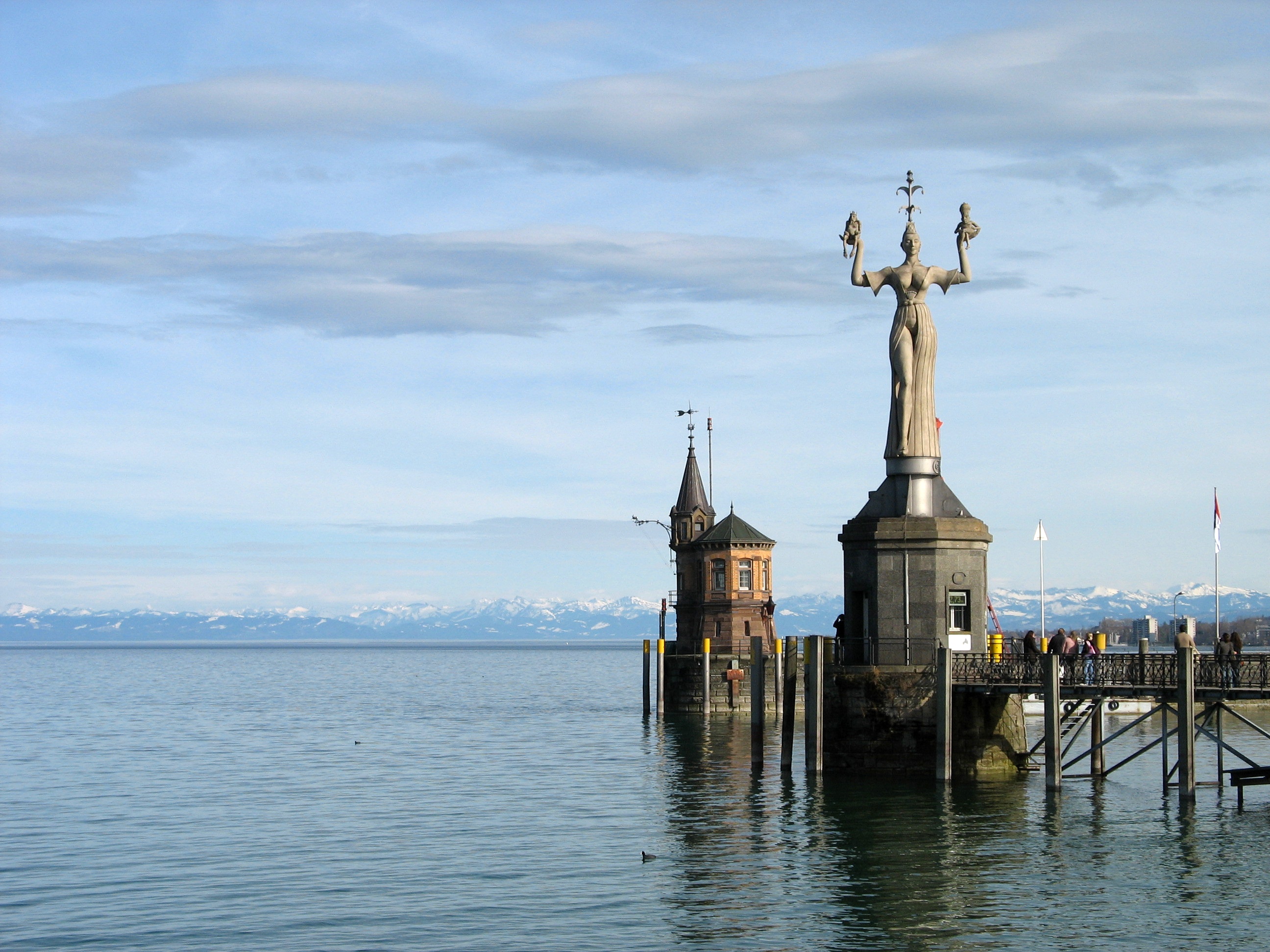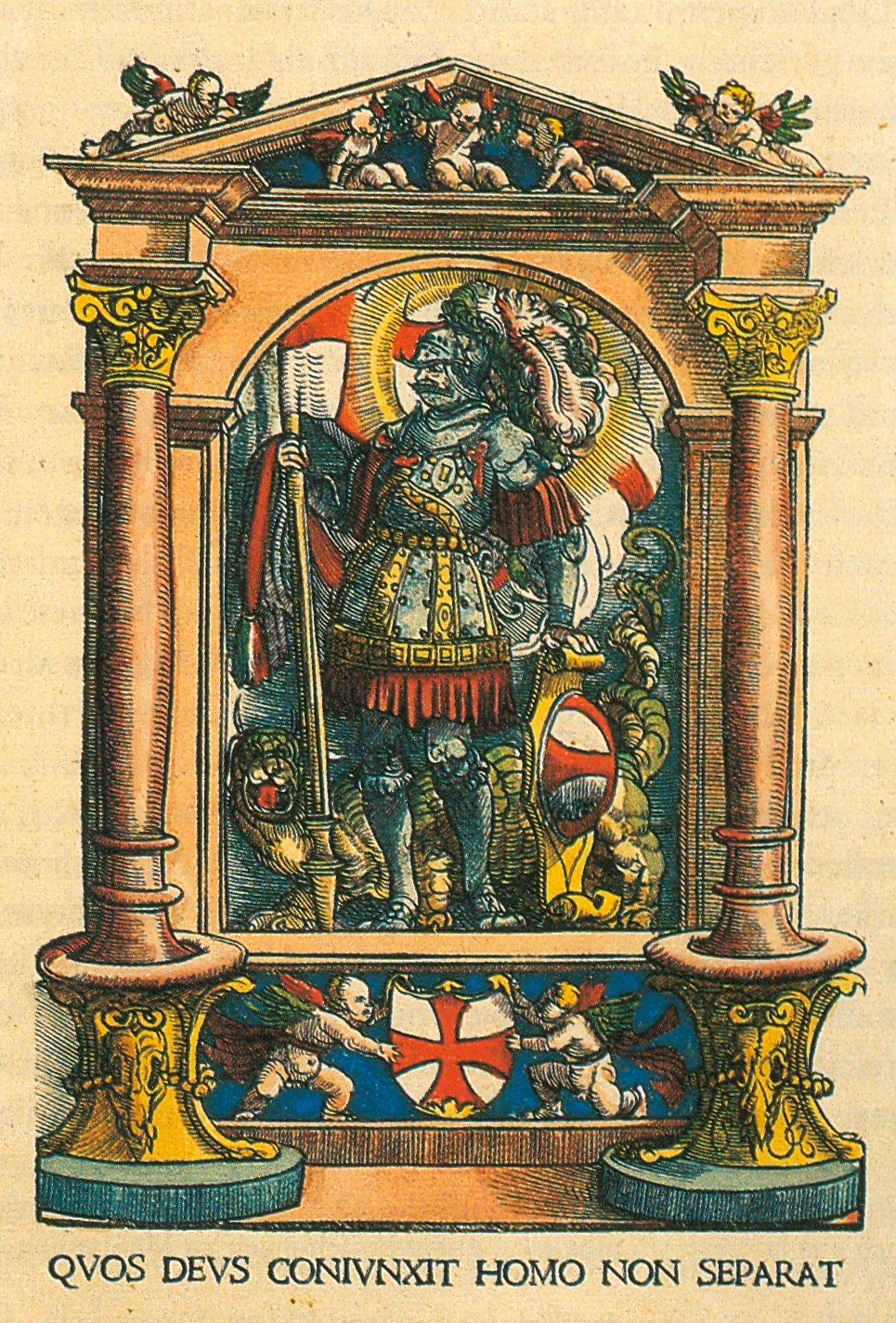|
Appenzell Ausserrhoden
Appenzell Ausserrhoden (; in English sometimes Appenzell Outer Rhodes) (german: Kanton Appenzell Ausserrhoden; rm, Chantun Appenzell Dadora; french: Canton d'Appenzell Rhodes-Extérieures; it, Canton Appenzello Esterno) is one of the 26 cantons forming the Swiss Confederation. It is composed of twenty municipalities. The seat of the government and parliament is Herisau, and the seat of judicial authorities are in Trogen. It is traditionally considered a " half-canton", the other half being Appenzell Innerrhoden. Appenzell Ausserrhoden is located in the north east of Switzerland. Together with the canton of Appenzell Innerrhoden, it forms an enclave within the canton of St. Gallen. The canton is essentially located in the Alpine foothills of the Alpstein massif, culminating at the Säntis. Appenzell Ausserrhoden was part of the historical canton of Appenzell, which was divided into Appenzell Innerrhoden (Catholic) and Appenzell Ausserrhoden (Protestant) in 1597 as a resul ... [...More Info...] [...Related Items...] OR: [Wikipedia] [Google] [Baidu] |
Cantons Of Switzerland
The 26 cantons of Switzerland (german: Kanton; french: canton ; it, cantone; Sursilvan and Surmiran: ; Vallader and Puter: ; Sutsilvan: ; Rumantsch Grischun: ) are the member states of the Swiss Confederation. The nucleus of the Swiss Confederacy in the form of the first three confederate allies used to be referred to as the . Two important periods in the development of the Old Swiss Confederacy are summarized by the terms ('Eight Cantons'; from 1353–1481) and ('Thirteen Cantons', from 1513–1798).rendered "the 'confederacy of eight'" and "the 'Thirteen-Canton Confederation'", respectively, in: Each canton of the Old Swiss Confederacy, formerly also ('lieu/locality', from before 1450), or ('estate', from ), was a fully sovereign state with its own border controls, army, and currency from at least the Treaty of Westphalia (1648) until the establishment of the Swiss federal state in 1848, with a brief period of centralised government during the Helvetic Republic ... [...More Info...] [...Related Items...] OR: [Wikipedia] [Google] [Baidu] |
Canton Of St
Canton may refer to: Administrative division terminology * Canton (administrative division), territorial/administrative division in some countries, notably Switzerland * Township (Canada), known as ''canton'' in Canadian French Arts and entertainment * Canton (band), an Italian synth pop group * "Canton" (song) by Japan * Canton, a fictional town in "Jaynestown", an episode of ''Firefly'' Design * Canton (building), a corner pilaster * Canton (flag), an emblem placed in the top left quarter of a flag * Canton (heraldry), a square or other charge (symbol) occupying the upper left corner of a coat of arms * Canton porcelain, Chinese ceramic ware People * Canton (surname), and list of people with the surname * Canton Jones, American Christian music/hip-hop artist Places Canada * Canton, New Brunswick, a community in Drummond Parish, New Brunswick * Canton, Ontario China * Guangdong (Canton Province), province in southern China * Guangzhou (Canton City), capit ... [...More Info...] [...Related Items...] OR: [Wikipedia] [Google] [Baidu] |
House Of Habsburg
The House of Habsburg (), alternatively spelled Hapsburg in Englishgerman: Haus Habsburg, ; es, Casa de Habsburgo; hu, Habsburg család, it, Casa di Asburgo, nl, Huis van Habsburg, pl, dom Habsburgów, pt, Casa de Habsburgo, la, Domus Habsburg, french: Maison des Habsbourg and also known as the House of Austriagerman: link=no, Haus Österreich, ; es, link=no, Casa de Austria; nl, Huis van Oostenrijk, pl, dom Austrii, la, Domus Austriæ, french: Maison d'Autriche; hu, Ausztria Háza; it, Casa d'Austria; pt, Casa da Áustria is one of the most prominent and important dynasties in European history. The house takes its name from Habsburg Castle, a fortress built in the 1020s in present-day Switzerland by Radbot of Klettgau, who named his fortress Habsburg. His grandson Otto II, Count of Habsburg, Otto II was the first to take the fortress name as his own, adding "Count of Habsburg" to his title. In 1273, Count Radbot's seventh-generation descendant Rudolph I of German ... [...More Info...] [...Related Items...] OR: [Wikipedia] [Google] [Baidu] |
Duke Of Austria
This is a list of people who have ruled either the Margraviate of Austria, the Duchy of Austria or the Archduchy of Austria. From 976 until 1246, the margraviate and its successor, the duchy, was ruled by the House of Babenberg. At that time, those states were part of the Holy Roman Empire. From 1246 until 1918, the duchy and its successor, the archduchy, was ruled by the House of Habsburg. Following the defeat of Austria-Hungary in World War I, the titles were abolished or fell into abeyance with the erection of the modern Republic of Austria. Margraves of Austria The March of Austria, also known as ''Marcha Orientalis'', was first formed in 976 out of the lands that had once been the March of Pannonia in Carolingian times. The oldest attestation dates back to 996, where the written name "ostarrichi" occurs in a document transferring land in present-day Austria to a Bavarian monastery. House of Babenberg , width=auto, Leopold I the Illustrious(''Luitpold der Erlauchte'')9 ... [...More Info...] [...Related Items...] OR: [Wikipedia] [Google] [Baidu] |
Konstanz
Konstanz (, , locally: ; also written as Constance in English) is a university city with approximately 83,000 inhabitants located at the western end of Lake Constance in the south of Germany. The city houses the University of Konstanz and was the residence of the Roman Catholic Diocese of Konstanz for more than 1,200 years. Location The city is located in the state of Baden-Württemberg and situated at the banks of Lake Constance (''Bodensee'' in German). The river Rhine, which starts in the Swiss Alps, passes through Lake Constance and leaves it, considerably larger, by flowing under a bridge connecting the two parts of the city. North of the river lies the larger part of the city with residential areas, industrial estates, and the University of Konstanz; while south of the river is the old town, which houses the administrative centre and shopping facilities in addition to the ''Hochschule'' or the ''University of Applied Sciences''. Car ferries provide access across Lake C ... [...More Info...] [...Related Items...] OR: [Wikipedia] [Google] [Baidu] |
Swabian League
The Swabian League (''Schwäbischer Bund'') was a mutual defence and peace keeping association of Imperial Estates – free Imperial cities, prelates, principalities and knights – principally in the territory of the early medieval stem duchy of Swabia established on 14 February 1488. The religious revolution of the Protestant Reformation divided its members, and the Swabian League disbanded in 1534. History The Swabian League was established in 1488 at the behest of Emperor Frederick III of Habsburg and supported as well by Bertold von Henneberg-Römhild, archbishop of Mainz, whose conciliar rather than monarchic view of the ''Reich'' often put him at odds with Frederick's successor Maximilian. The Swabian League cooperated towards the keeping of the imperial peace and at least in the beginning curbing the expansionist Bavarian dukes from the House of Wittelsbach and the revolutionary threat from the south in the form of the Swiss. The League held regular meetings, supported ... [...More Info...] [...Related Items...] OR: [Wikipedia] [Google] [Baidu] |
Grazing Rights
Grazing rights is the right of a user to allow their livestock to feed (graze) in a given area. United States Grazing rights have never been codified in United States law, because such common-law rights derive from the English concept of the commons, a piece of land over which people, often neighboring landowners, could exercise one of a number of such traditional rights, including livestock grazing. Prior to the 19th century, the traditional practice of grazing the open range in the United States was rarely disputed because of the sheer amount of unsettled open land. However, as the population of the western United States increased in the mid-to-late 19th century, range wars often erupted over the ranchers' perceived rights to graze their cattle as the western range deteriorated with overuse. In 1934, the Taylor Grazing Act formally set out the federal government's powers and policy on grazing federal lands in the Western United States by establishing the Division of Gr ... [...More Info...] [...Related Items...] OR: [Wikipedia] [Google] [Baidu] |
Raetia
Raetia ( ; ; also spelled Rhaetia) was a province of the Roman Empire, named after the Rhaetian people. It bordered on the west with the country of the Helvetii, on the east with Noricum, on the north with Vindelicia, on the south-west with Transalpine Gaul and on the south with Venetia et Histria, a region of Roman Italy. It thus comprised the districts occupied in modern times by eastern and central Switzerland (containing the Upper Rhine and Lake Constance), southern Germany ( Bavaria and most of Baden-Württemberg), Vorarlberg and the greater part of Tyrol in Austria, and part of northern Lombardy in Italy. The region of Vindelicia (today eastern Württemberg and western Bavaria) was annexed to the province at a later date than the others. The northern border of Raetia during the reigns of emperors Augustus and Tiberius was the River Danube. Later the Limes Germanicus marked the northern boundary, stretching for 166 km north of the Danube. Raetia l ... [...More Info...] [...Related Items...] OR: [Wikipedia] [Google] [Baidu] |
Germanisation
Germanisation, or Germanization, is the spread of the German language, people and culture. It was a central idea of German conservative thought in the 19th and the 20th centuries, when conservatism and ethnic nationalism went hand in hand. In linguistics, Germanisation of non-German languages also occurs when they adopt many German words. Under the policies of states such as the Teutonic Order, Austria, the German Empire and Nazi Germany, non-Germans were often prohibited from using their native language, and had their traditions and culture suppressed in the goal of gradually eliminating foreign cultures, a form of ethnic cleansing. In addition, colonists and settlers were used to upset the population balance. During the Nazi era, Germanisation turned into a policy of genocide against some non-German ethnic groups. Forms Historically there are different forms and degrees of the expansion of the German language and of elements of German culture. There are examples of complete a ... [...More Info...] [...Related Items...] OR: [Wikipedia] [Google] [Baidu] |
Abbot
Abbot is an ecclesiastical title given to the male head of a monastery in various Western religious traditions, including Christianity. The office may also be given as an honorary title to a clergyman who is not the head of a monastery. The female equivalent is abbess. Origins The title had its origin in the monasteries of Egypt and Syria, spread through the eastern Mediterranean, and soon became accepted generally in all languages as the designation of the head of a monastery. The word is derived from the Aramaic ' meaning "father" or ', meaning "my father" (it still has this meaning in contemporary Hebrew: אבא and Aramaic: ܐܒܐ) In the Septuagint, it was written as "abbas". At first it was employed as a respectful title for any monk, but it was soon restricted by canon law to certain priestly superiors. At times it was applied to various priests, e.g. at the court of the Frankish monarchy the ' ("of the palace"') and ' ("of the camp") were chaplains to the Merov ... [...More Info...] [...Related Items...] OR: [Wikipedia] [Google] [Baidu] |
Abbey Of St
An abbey is a type of monastery used by members of a religious order under the governance of an abbot or abbess. Abbeys provide a complex of buildings and land for religious activities, work, and housing of Christian monks and nuns. The concept of the abbey has developed over many centuries from the early monastic ways of religious men and women where they would live isolated from the lay community about them. Religious life in an abbey may be monastic. An abbey may be the home of an enclosed religious order or may be open to visitors. The layout of the church and associated buildings of an abbey often follows a set plan determined by the founding religious order. Abbeys are often self-sufficient while using any abundance of produce or skill to provide care to the poor and needy, refuge to the persecuted, or education to the young. Some abbeys offer accommodation to people who are seeking spiritual retreat. There are many famous abbeys across the Mediterranean Basin and ... [...More Info...] [...Related Items...] OR: [Wikipedia] [Google] [Baidu] |
Glatt (river, Thur) , a river in the Glatt Valley of the canton of Zürich, Switzerland
{{Disambiguation, geo ...
Glatt may refer to: * Glatt group, a German manufacturer * Glatt kosher, a term used in Jewish dietary law * Glatt (Neckar), a river in Baden-Württemberg, Germany *Glatt (Rhine) Glatt () is the name of a lesser affluent to the High Rhine in the Unterland of the canton of Zurich, Switzerland. It is long and flows out from the Greifensee through the Glatt Valley, discharging into the Rhine by Glattfelden. Whereas the u ... [...More Info...] [...Related Items...] OR: [Wikipedia] [Google] [Baidu] |










